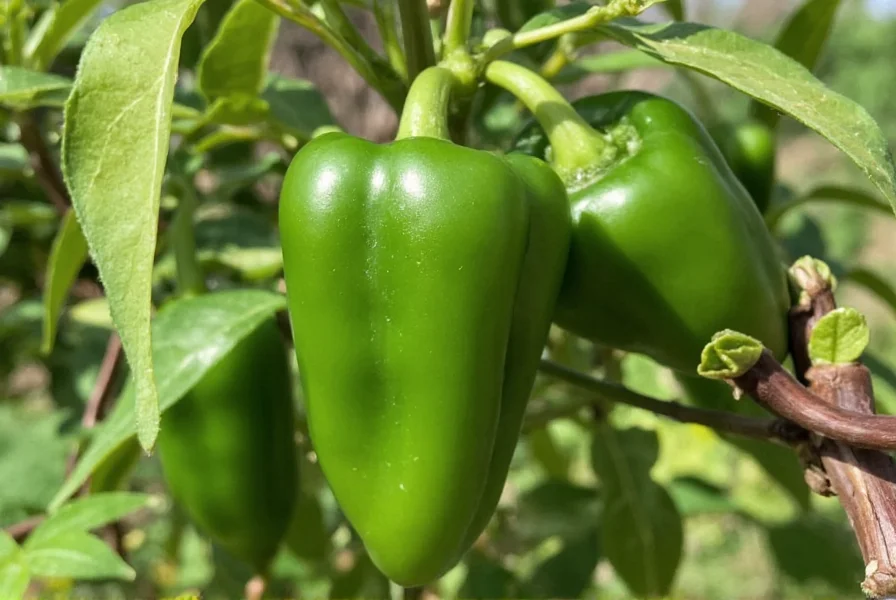Hatch chile peppers represent one of America's most distinctive regional food specialties, with a flavor profile that sets them apart from other chili varieties. Grown almost exclusively in the fertile valley surrounding the town of Hatch in southern New Mexico, these peppers benefit from the region's unique combination of high altitude, abundant sunshine, and mineral-rich soil. The term 'Hatch chile' refers to several varieties of New Mexico chile peppers—including Big Jim, Sandia, and Joe E. Parker—that are cultivated using traditional methods passed down through generations of local farmers.
What makes Hatch chiles truly special is their remarkable versatility in the kitchen. Unlike many single-purpose peppers, Hatch varieties work beautifully across the entire culinary spectrum—from mild 'premier' varieties perfect for stuffed peppers and creamed chile sauces to hotter 'hot' varieties that add depth to salsas and stews. Their flavor complexity develops further when roasted, transforming their natural sugars and creating that signature smoky aroma that defines authentic Southwestern cuisine.
Understanding Hatch Chile Varieties and Heat Levels
Hatch chiles come in multiple varieties that differ primarily in heat level while maintaining the characteristic flavor profile. The heat can vary significantly based on growing conditions, with the same variety sometimes producing milder or hotter peppers depending on weather patterns during the growing season.
| Variety | Heat Level (Scoville) | Best Culinary Uses |
|---|---|---|
| Premier | 1,000-2,500 | Stuffed peppers, cream sauces, mild salsas |
| Mild | 2,500-4,000 | Chile rellenos, soups, casseroles |
| Medium | 4,000-6,000 | Enchiladas, stews, roasted vegetable dishes |
| Hot | 6,000-8,000 | Salsas, hot sauces, meat marinades |
The Significance of Hatch Chile Season
Hatch chile season runs from late July through early October, with peak availability typically in August and September. This limited window creates what locals call 'chile fever,' when farmers markets overflow with fresh peppers and communities host chile roasting events. The seasonality matters because fresh Hatch chiles develop their most complex flavors when harvested at peak ripeness during these warm summer months.
During harvest season, you'll find mobile roasters set up in parking lots across the Southwest, where vendors roast fresh peppers in rotating drums over propane flames. This traditional roasting method serves two purposes: it loosens the tough outer skin for easy removal, and it transforms the peppers' natural sugars, creating that distinctive smoky flavor profile that defines authentic Hatch chile cuisine. Learning how to roast Hatch chiles properly is essential for capturing their full flavor potential.

Growing Conditions That Define Authentic Hatch Flavor
The unique flavor of Hatch chile peppers comes directly from the specific growing conditions in the Hatch Valley. This region benefits from:
- High desert climate with significant temperature swings between day and night
- Mineral-rich soil from the Rio Grande river valley
- Abundant sunshine (over 300 days per year)
- High altitude (approximately 4,500 feet above sea level)
These conditions create what food scientists call 'terroir'—the environmental factors that give agricultural products their distinctive characteristics. While New Mexico chile peppers are grown in other regions, only those cultivated in the Hatch Valley can legitimately be called 'Hatch chiles.' Understanding Hatch chile growing conditions explains why imitations often fall short of the authentic flavor experience.
Culinary Applications for Hatch Chile Peppers
Hatch chiles shine in traditional Southwestern dishes but have found their way into contemporary cuisine as well. For home cooks wondering what to make with Hatch green chilies, consider these applications:
Classic preparations: Chile rellenos, green chile stew, stacked enchiladas, and New Mexico red chile sauce (made from fully ripened red Hatch chiles). The traditional Hatch chile cheeseburger has become a regional specialty, featuring roasted green chiles melted with cheese on a grilled burger.
Modern adaptations: Hatch chile mac and cheese, green chile aioli, roasted Hatch chile pesto, and even Hatch chile chocolate truffles. The peppers' complex flavor profile works surprisingly well in both savory and sweet applications when properly balanced.

Selecting, Storing, and Preserving Hatch Chiles
When selecting fresh Hatch chiles, look for firm peppers with smooth, unblemished skin and a vibrant green color. Avoid peppers with soft spots or wrinkles, which indicate age. The stems should be fresh and green, not dried or brittle.
For short-term storage (1-2 weeks), keep fresh Hatch chiles in a paper bag in the refrigerator's vegetable drawer. For longer preservation, roasting and freezing is the preferred method among Southwestern chefs. After roasting and peeling, place the chiles in airtight containers or freezer bags, removing as much air as possible. Properly frozen Hatch chiles maintain their flavor for up to one year.
Many home cooks also ask about how to can Hatch chile peppers for shelf-stable preservation. While possible, canning requires strict adherence to pressure-canning protocols due to the peppers' low acidity. Freezing remains the safest and most flavor-preserving method for home preservation.
Hatch Chiles Compared to Similar Varieties
Many people confuse Hatch chiles with other popular peppers. Here's how they compare to similar varieties:
- Hatch vs Jalapeño: Jalapeños (2,500-8,000 Scoville) are generally hotter than mild Hatch varieties but lack the complex flavor profile. Hatch chiles offer more earthiness and less upfront heat.
- Hatch vs Anaheim: Anaheim peppers (500-2,500 Scoville) are milder and less flavorful than most Hatch varieties. They work as a substitute when mild heat is preferred.
- Hatch vs Poblano: Poblanos (1,000-2,000 Scoville) are milder and heart-shaped, making them better for stuffing, while Hatch varieties offer more heat and complex flavor.
Understanding these differences helps when following recipes that specify Hatch green chile pepper substitutes. While substitutions are possible, they won't replicate the authentic Hatch experience.
Frequently Asked Questions About Hatch Chile Peppers
When is Hatch chile season and why is it limited?
Hatch chile season runs from late July through early October, with peak availability in August and September. The season is limited because authentic Hatch chiles can only be harvested when they reach optimal ripeness in the specific climate conditions of New Mexico's Hatch Valley. The short growing window creates what locals call 'chile fever' each summer, when fresh peppers flood markets and communities host roasting events. This seasonality preserves the peppers' distinctive flavor that develops under the region's high-altitude sun.
How do I properly roast fresh Hatch chiles at home?
To roast Hatch chiles properly, place whole peppers directly over a gas flame, on a grill, or under a broiler, turning frequently until the skin blisters and blackens completely (about 5-8 minutes). Immediately transfer the roasted peppers to a sealed paper bag or covered bowl for 10-15 minutes to steam, which loosens the skin. Then peel off the blackened skin, remove the stems and seeds, and slice or chop as needed. Proper roasting enhances the peppers' natural sugars and creates the signature smoky flavor essential for authentic Southwestern dishes.
What's the difference between Hatch green chiles and New Mexico chiles?
All Hatch chiles are New Mexico chiles, but not all New Mexico chiles are Hatch chiles. 'New Mexico chile' refers to the broader category of chile peppers developed at New Mexico State University, while 'Hatch chile' specifically denotes peppers grown in the Hatch Valley region. Only peppers cultivated in this designated area can legally be called 'Hatch.' The terroir of the Hatch Valley—its soil composition, altitude, and climate—creates the distinctive flavor profile that sets authentic Hatch chiles apart from other New Mexico varieties grown elsewhere.
Can I grow authentic Hatch chile peppers outside of New Mexico?
While you can grow Hatch chile pepper seeds in other locations, the resulting peppers won't be authentic Hatch chiles. The distinctive flavor comes from the specific growing conditions in New Mexico's Hatch Valley—its high altitude, mineral-rich soil, and desert climate. Gardeners outside New Mexico can grow similar varieties like 'New Mexico No. 6' or 'Big Jim,' but these will lack the terroir-driven characteristics of true Hatch chiles. For the most authentic experience, seek out fresh or frozen peppers from certified Hatch Valley growers during chile season.
How should I store roasted Hatch chiles for long-term use?
The best method for long-term storage of roasted Hatch chiles is freezing. After roasting, peeling, and deseeding, place the chiles in airtight containers or heavy-duty freezer bags, removing as much air as possible. Properly frozen Hatch chiles maintain their flavor for up to one year. Some people also ask about canning Hatch chiles, but this requires strict pressure-canning protocols due to the peppers' low acidity. Freezing preserves more flavor and is safer for home preservation. For immediate use (1-2 weeks), store fresh unroasted chiles in a paper bag in your refrigerator's vegetable drawer.











 浙公网安备
33010002000092号
浙公网安备
33010002000092号 浙B2-20120091-4
浙B2-20120091-4